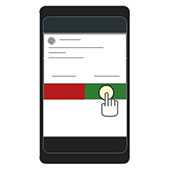Smartphones have become an integral part of the lives of a major section of the population. Smartphones help the users to get a lot of work done on the go and stay connected to people and information. But this, sometimes comes at a cost of some nagging issues. One such issue is that of numerous and often useless notifications. These could range from promotional messages, to group chats to app notifications. Research suggests that such interruptions have the potential to affect the productivity of the users adversely as well as raise their anxiety levels. While there are methods by which the user can block or silence such notifications, it requires the user to actively tune the settings to meet their requirements. But there are users who lack the knowledge or patience to do so. This is also due to the fact that they don’t realize how these notifications are disrupting their work/life.
In this project, an attempt is made to develop a framework that can reduce the number of low-priority smartphone generated interruptions. This system would be personalized to each user since it learns from the individual user’s behaviour. This framework includes the interactions through which the user can communicate their opinion about a notification, an underlying algorithm that would learn from the user input and identify low-priority notifications; and finally, methods through which the user can interact with the low-priority notifications. This framework is being proposed as an expansion to the Android OS. The primary research was done in the form of semi-structured interviews and a data collection tool to collect notification data from users.
Separate prototypes were developed to demonstrate the working of the UI elements; and to demonstrate the working of the algorithm. The prototype was used to collect data from 8 users and evaluated for accuracy in identification of low-priority notifications, in both long-term and short-term use cases.
Case Study Download:
• Smart Notification System......
• Smart Notification System- Report......


